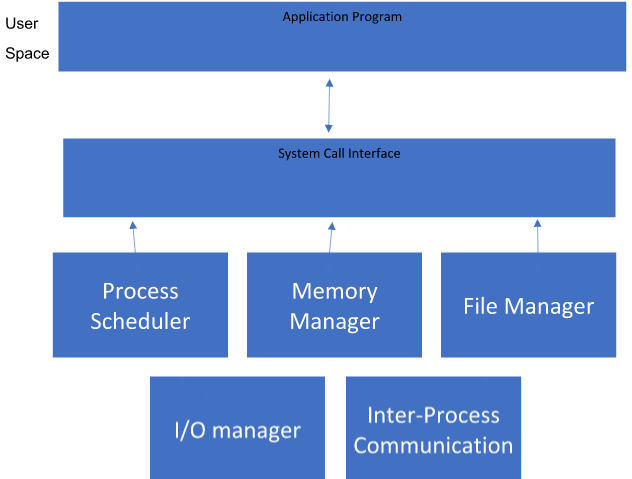Monolithic architecture - operating system
Monolithic architecture
Operating systems based on this architecture are the oldest. All the core components of the operating system are collectively known as the kernel.
All system resources are accessible to the kernel. Monolithic systems contain each component of the operating system within the kernel.
Process management, file management, memory management, exception handling, process communication, etc. are all provided by the kernel.
Linux is a good example of monolithic kernel.

Fig. Monolithic architecture of operating system
Monolithic architecture has the following advantages:
-
An easy-to-implement structure
-
All services are directly accessible, resulting in faster execution
Disadvantages of Monolithic Architecture:
-
It is very difficult to add new features or to remove obsolete ones.
-
Various servers are not isolated in the kernel, so there are always security issues.
